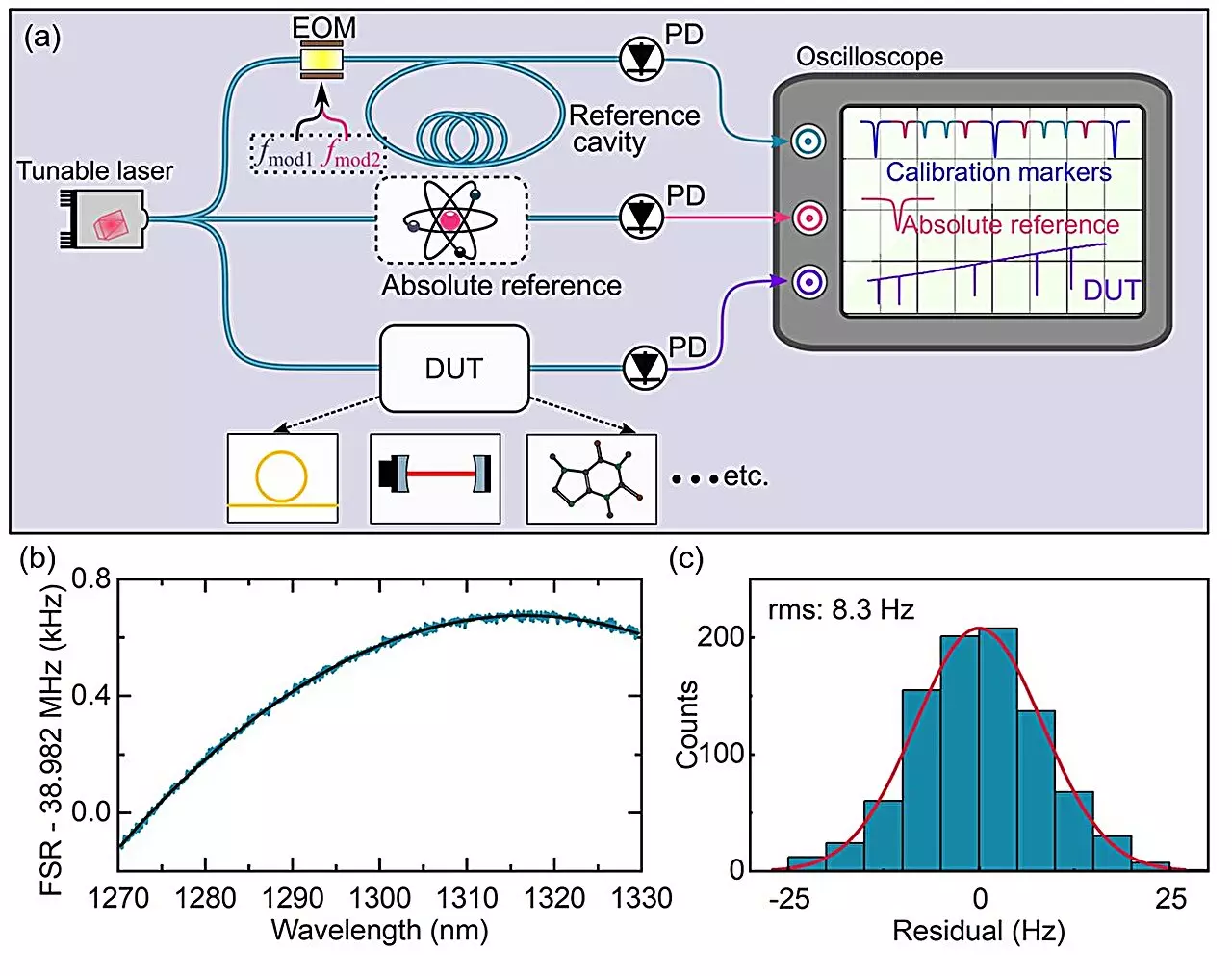Laser spectroscopy has seen remarkable evolution since its inception in the 1960s. The ability to probe the intricate structures and dynamic behaviors of atoms and molecules has led to significant scientific insights across various fields, from chemistry to astrophysics. By harnessing advanced laser technologies, researchers are now capable of unprecedented levels of precision, thus pushing the boundaries of what can be measured and understood. Among the various methodologies, two prominent types have emerged: frequency comb-based laser spectroscopy and tunable continuous-wave (CW) laser spectroscopy.
Frequency comb-based laser spectroscopy is renowned for its accuracy, which has advanced to a remarkable precision of up to 18 digits. This exceptional measurement finesse earned researchers the Nobel Prize in Physics in 2005. The applications of this technology are far-reaching, finding utility in critical areas such as optical clocks, gravity sensing, and deep investigations into the elusive realms of dark matter. The marriage of broad bandwidth and high spectral resolution enables rapid and meticulous spectral analysis. Yet, despite its many advantages, frequency combs have their limitations; notably, they exhibit low power per comb mode, complicating the detection of trace gases. The interplay between comb modes necessitates supplementary measurement techniques to efficiently capture narrow spectral features, challenging the system’s overall efficacy. Additionally, the quest for high-precision data demands comb sources maintain long-term coherence, which often involves intricate stabilization mechanisms.
In contrast, tunable continuous-wave lasers stand out for their high photon flux and frequency agility, making them prime candidates for sensitive applications in molecular spectroscopy, gas detection, and LIDAR. Their attribute of high signal-to-noise ratios can significantly enhance data reliability. However, these advantages come with challenges, chiefly concerning fluctuations in laser frequency scan speed. Researchers have adopted diverse techniques—including interferometric methods, single-sideband modulation, and the incorporation of optical frequency combs—to address this instability. Frequency-comb-calibrated tunable laser spectroscopy attempts to integrate the benefits of both frequency combs and CW lasers; nevertheless, the necessity for a reference frequency comb that possesses a planar optical spectrum and stable polarization poses its unique set of difficulties.
A Groundbreaking Approach: Simplifying Precision Measurement
Researchers at the Max Planck Institute for the Science of Light are pioneering a new approach to broadband spectroscopy that promises to transform the landscape. Reported in the journal Advanced Photonics, their method employs a simple yet effective calibration technique, utilizing a fiber cavity alongside dual radio frequency (RF) modulation. This innovative system allows for real-time calibration of the laser frequency, enabling researchers to track the color of the sweeping laser with remarkable accuracy, effectively serving as a precision optical frequency ruler. This breakthrough is significant, as it allows for ultra-high precision measurements of optical frequency distances between various spectral features.
One of the pressing achievements of this new method is the assessment of minute deviations in the free spectral range of a fiber loop cavity across an impressive 11-THz frequency range. The results of these measurements demonstrated sub-10-Hz precision, marking an order of magnitude advancement over traditional tunable laser spectroscopy techniques. With a measurement speed clocked at 1 THz/s—the capability hampered only by the reference cavity’s linewidth—this method superbly enhances optical probe power and provides superior stability in spectral flatness and polarization, crucial for various applications.
Wide-ranging Applications and Future Implications
The implications of this novel method extend across numerous fields. Beyond simply enhancing measurement precision, the technique has been employed to examine spectral features of integrated photonic devices, such as microresonators, and to accurately measure the molecular absorption spectrum of HF gas—accomplishing two orders of magnitude improvement over existing methodologies. Notably, the robustness and simplicity of this method make it highly adaptable for use in challenging environments, signifying its potential for real-world applications like LIDAR systems, 3D imaging, and open-path trace gas sensing.
The elegance of this new spectroscopy technique lies in its uncomplicated design, free from the conventional complexities of mode locking or phase locking. As researchers continue to explore this method’s boundaries, its future applications could redefine low-cost, high-efficiency measurement systems utilized in various scientific and industrial disciplines, establishing a new norm in the realm of precision measurement.

